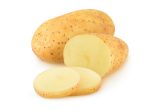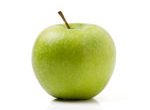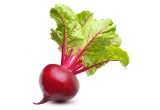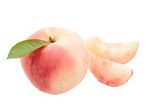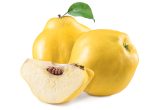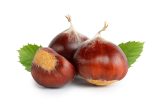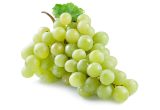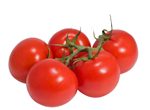Fig

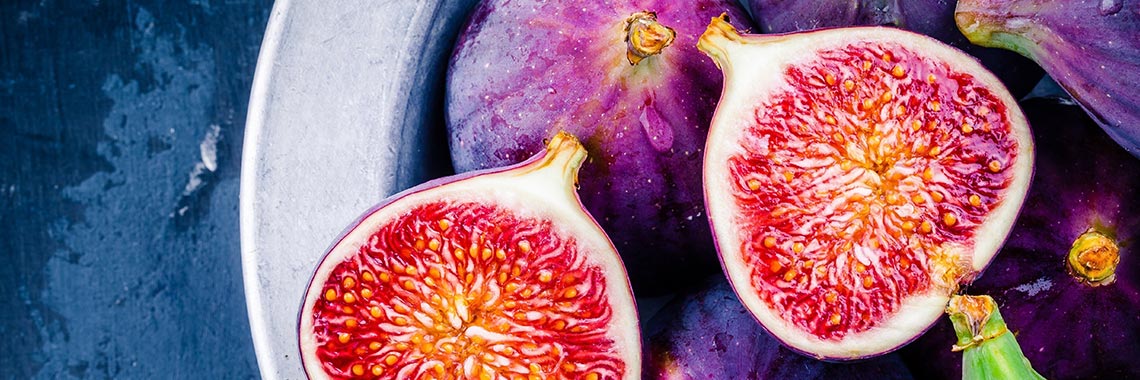
Description
- The fig tree (Ficus carica L. ) belongs to the Moraceae family.
- It is a fruit tree of classical antiquity associated with the beginning of horticulture in the Mediterranean basin (Aradhya, 2010).
- Among the main cultivars are Dottato, Citrullara and San Francesco (Loizzo, 2014).
PHYSICAL AND ORGANOLEPTIC CHARACTERISTICS
- The development of the fig is composed of three phases (Lama, 2020):
- phase 1: rapid growth in fruit size;
- phase 2: the fruit remains about the same size; appearance of colour and firmness;
- phase 3: fruit ripening and growth, colour change, softening, and change in pulp texture to an edible state.
- A study on fig cultivars found in northeastern Turkey revealed that the fruit colour varies from light green, light purple, purple, dark purple to black (Ercisli, 2012).
- Anthocyanins, carotenoids and chlorophyll are the pigments defining the colour of its skin. Anthocyanin formation and chlorophyll degradation in the skin mainly occur during the second growth period of the fig, during its ripening and sugar accumulation (Wang, 2019).
- The main anthocyanins in fig pulp are reportedly cyanidin-3-rutinoside, cyanidin-3-glucoside and pelargonidin derivatives. Cyanidin-3,5-O-diglucoside and cyanidin-O-malonyl-hexoside have also been identified in the skin (Wang, 2019).
- Citric and malic acids are the organic acids that give the fig an acidic taste. They represent more than 80% of the total organic acids of the fruit, throughout its development and ripening (Lama, 2020).
- The degree of ripeness of figs (of different cultivars) appears to have a significant influence on their chemical composition and sensory profile. Figs that are less ripe have a thicker skin and higher “green” or “latex” taste notes. They are also firmer, grittier and more bitter. Conversely, riper figs are perceived as fruitier, juicier and sweeter (King, 2012).
- β-ionone, 6-methyl-5-hepten-2-ol and α-ionone are volatile compounds of the apocarotenoid family which are believed to be responsible for the aroma of figs (Nawade, 2020).
COMPOSITION CHARACTERISTICS (excluding macronutrients, vitamins and minerals)
- Phenolic acids (especially gallic acid and chlorogenic acid) and flavonoids (especially rutin, quercetin-3-O-rutinoside and epicatechin) are the main types of phytochemicals found in fresh figs. Their levels are strongly influenced by various factors such as colour, part and maturity of the fruit (Arvaniti, 2019).
- Containing significant levels of bioactive metabolites such as flavonoids, phenolic acids, tannins, alkaloids, glycosides, coumarins, triterpenoids and sterols, species of the genus Ficus are believed to have anti-diabetic properties. Its bioactive compounds reportedly stimulate insulin secretion and subsequently reduce blood sugar (Deepa, 2018).
- The antioxidant capacity of figs is strongly correlated with their amount of phenolic compounds. This gives them beneficial health effects, including antifungal, anti-helminthic and anti-carcinogenic properties (Arvaniti, 2019).
- Figs are also reported to have significant antiproliferative effects on colorectal cancer cells and induce their apoptosis (Soltana, 2019)
RAW
The following values are approximate and depend on variety, season, ripeness, cultivation conditions, etc.
Figs provide an average of 69.40 calories (kcal) per 100 g, i.e. 293 kJ.
One fig weighs on average 50 g, therefore providing approximately 34.70 kcal.
COMPOSITION TABLES
For each nutrient, the tables provide information on the content, minimum and maximum values, as well as the percentage of the Dietary Reference Values (DRVs) for 100 g net of raw figs.
MACRONUTRIENTS
| Constituent (g) | Average content |
Min-Max per 100g |
DRV% |
|---|---|---|---|
| Water | 80,20 | 79,10 - NC | - |
| Fibers | 4,10 | 2,10 - NC | - |
| Carbohydrates | 13,50 | - | 5,19 |
| Sugars | 12,20 | NC - 16,30 | 13,56 |
| Lipids | < 0,50 | 0 - NC | - |
| Saturated fat | < 0,01 | NC - 0,10 | - |
| Protein | 1,19 | 0,63 - 1,20 | 2,38 |
| Constituent (g) | Amount | Min-Max | DRV% |
|---|---|---|---|
| Water | Ciqual 2020 (valeur issue des analyses Ciqual-Aprifel 2017) | - | - |
| Fibers | Ciqual 2020 (valeur issue des analyses Ciqual-Aprifel 2017) | - | - |
| Carbohydrates | Ciqual 2020 | - | Règlement (UE) N°1169/2011 du parlement Européen et du conseil du 25 octobre 2011 |
| Sugars | Ciqual 2020 (valeur issue des analyses Ciqual-Aprifel 2017) | - | Règlement (UE) N°1169/2011 du parlement Européen et du conseil du 25 octobre 2011 |
| Lipids | Ciqual 2020 (valeur issue des analyses Ciqual-Aprifel 2017) | - | Règlement (UE) N°1169/2011 du parlement Européen et du conseil du 25 octobre 2011 |
| Saturated fat | Ciqual 2020 (valeur issue des analyses Ciqual-Aprifel 2017) | - | Règlement (UE) N°1169/2011 du parlement Européen et du conseil du 25 octobre 2011 |
| Protein | Ciqual 2020 (valeur issue des analyses Ciqual-Aprifel 2017) | - | Règlement (UE) N°1169/2011 du parlement Européen et du conseil du 25 octobre 2011 |
Zoom on carbohydrates
- The energy of figs comes mainly from their carbohydrates, amounting to 13.50 g per 100 g.
- This amount is above the average content found in fresh fruit: about 11.31 g per 100 g.
- Their carbohydrates are mainly fructose (6.20 g per 100 g) and glucose (6 g per 100 g).
Zoom on fibres
- Figs are a source of fibre* as they contain more than 3 g per 100 g of fruit, i.e. 4.10 g per 100 g.
- This amount of fibre is higher than the average content in fresh fruit (2.77 g per 100 g).
Zoom on proteins
- The protein content of figs (1.19 g per 100 g) is higher than the average amount found in fresh fruit: 0.93 g per 100 g.
Zoom on lipids
- Figs are fat-free* as they contain less than 0.5 g of fat per 100 g.
*Regulation (EC) No 1924/2006 of the European Parliament and of the Council of 20 December 2006 on nutrition and health claims made on foods.
MINERALS AND TRACE ELEMENTS
| Constituent | Average content |
Min-Max per 100g |
DRV% |
|---|---|---|---|
| Calcium (mg) | 57 | 11 - 85,60 | 7,13 |
| Chloride (mg) | < 20 | - | - |
| Copper (mg) | 0,08 | 0,07 - NC | 8 |
| Iron (mg) | 0,27 | NC - 0,37 | 1,93 |
| Iodine (µg) | < 20 | - | - |
| Magnesium (mg) | 22 | 17 - NC | 5,87 |
| Manganese (mg) | 0,06 | NC - 0,13 | 3 |
| Phosphorus (mg) | 21 | 14 - 72,20 | 3 |
| Potassium (mg) | 230 | NC - 232 | 11,50 |
| Selenium (µg) | < 20 | - | - |
| Sodium (mg) | 5 | 1 - NC | - |
| Zinc (mg) | 0,16 | 0,15 - NC | 1,60 |
| Constituent | Amount | Min-Max | DRV% |
|---|---|---|---|
| Calcium (mg) | Ciqual 2020 (valeur issue des analyses Ciqual-Aprifel 2017) | - | Règlement (UE) N°1169/2011 du parlement Européen et du conseil du 25 octobre 2011 |
| Chloride (mg) | Ciqual 2020 (valeur issue des analyses Ciqual-Aprifel 2017) | - | Règlement (UE) N°1169/2011 du parlement Européen et du conseil du 25 octobre 2011 |
| Copper (mg) | Ciqual 2020 (valeur issue des analyses Ciqual-Aprifel 2017) | - | Règlement (UE) N°1169/2011 du parlement Européen et du conseil du 25 octobre 2011 |
| Iron (mg) | Ciqual 2020 (valeur issue des analyses Ciqual-Aprifel 2017) | - | Règlement (UE) N°1169/2011 du parlement Européen et du conseil du 25 octobre 2011 |
| Iodine (µg) | Ciqual 2020 (valeur issue des analyses Ciqual-Aprifel 2017) | - | Règlement (UE) N°1169/2011 du parlement Européen et du conseil du 25 octobre 2011 |
| Magnesium (mg) | Ciqual 2020 (valeur issue des analyses Ciqual-Aprifel 2017) | - | Règlement (UE) N°1169/2011 du parlement Européen et du conseil du 25 octobre 2011 |
| Manganese (mg) | Ciqual 2020 (valeur issue des analyses Ciqual-Aprifel 2017) | - | Règlement (UE) N°1169/2011 du parlement Européen et du conseil du 25 octobre 2011 |
| Phosphorus (mg) | Ciqual 2020 (valeur issue des analyses Ciqual-Aprifel 2017) | - | Règlement (UE) N°1169/2011 du parlement Européen et du conseil du 25 octobre 2011 |
| Potassium (mg) | Ciqual 2020 (valeur issue des analyses Ciqual-Aprifel 2017) | - | Règlement (UE) N°1169/2011 du parlement Européen et du conseil du 25 octobre 2011 |
| Selenium (µg) | Ciqual 2020 (valeur issue des analyses Ciqual-Aprifel 2017) | - | Règlement (UE) N°1169/2011 du parlement Européen et du conseil du 25 octobre 2011 |
| Sodium (mg) | Ciqual 2020 (valeur issue des analyses Ciqual-Aprifel 2017) | - | - |
| Zinc (mg) | Ciqual 2020 (valeur issue des analyses Ciqual-Aprifel 2017) | - | Règlement (UE) N°1169/2011 du parlement Européen et du conseil du 25 octobre 2011 |
Zoom on minerals and trace elements
- Figs contain a significant amount of potassium, representing 11.50% of DRVs, i.e. 230 mg per 100 g.
- Copper is the trace element best represented in figs, with a quantity equivalent to 8% of DRVs, i.e. 0.08 mg per 100 g.
- The other minerals and trace elements are present in quantities representing less than 8% of DRVs.
VITAMINS
| Constituent | Average content |
Min-Max per 100g |
DRV% |
|---|---|---|---|
| Provitamin A Beta-carotene (µg) | 73,6 | NC - 85 | - |
| Vitamin A equivalent (µg) | 12,27 | NC - 14,17 | 1,53 |
| Vitamin B1 (mg) | < 0,015 | NC - 0,06 | - |
| Vitamin B2 (mg) | < 0,01 | NC - 0,05 | - |
| Vitamin B3 (mg) | 0,37 | NC - 0,40 | 2,31 |
| Vitamin B5 (mg) | 0,15 | NC - 0,30 | 2,50 |
| Vitamin B6 (mg) | 0,059 | NC - 0,11 | 4,21 |
| Vitamin B9 (µg) | 24,50 | 6 - NC | 12,25 |
| Vitamin C (mg) | < 0,50 | NC - 2 | - |
| Vitamin E (mg) | < 0,08 | NC - 0,77 | - |
| Vitamin K1 (µg) | 5,22 | 4,70 - NC | 6,96 |
| Constituent | Amount | Min-Max | DRV% |
|---|---|---|---|
| Provitamin A Beta-carotene (µg) | Ciqual 2020 (valeur issue des analyses Ciqual-Aprifel 2017) | - | - |
| Vitamin A equivalent (µg) | Calcul à partir de la valeur Provitamine A Béta-carotène* | - | Règlement (UE) N°1169/2011 du parlement Européen et du conseil du 25 octobre 2011 |
| Vitamin B1 (mg) | Ciqual 2020 (valeur issue des analyses Ciqual-Aprifel 2017) | - | Règlement (UE) N°1169/2011 du parlement Européen et du conseil du 25 octobre 2011 |
| Vitamin B2 (mg) | Ciqual 2020 (valeur issue des analyses Ciqual-Aprifel 2017) | - | Règlement (UE) N°1169/2011 du parlement Européen et du conseil du 25 octobre 2011 |
| Vitamin B3 (mg) | Ciqual 2020 (valeur issue des analyses Ciqual-Aprifel 2017) | - | Règlement (UE) N°1169/2011 du parlement Européen et du conseil du 25 octobre 2011 |
| Vitamin B5 (mg) | Ciqual 2020 (valeur issue des analyses Ciqual-Aprifel 2017) | - | Règlement (UE) N°1169/2011 du parlement Européen et du conseil du 25 octobre 2011 |
| Vitamin B6 (mg) | Ciqual 2020 (valeur issue des analyses Ciqual-Aprifel 2017) | - | Règlement (UE) N°1169/2011 du parlement Européen et du conseil du 25 octobre 2011 |
| Vitamin B9 (µg) | Ciqual 2020 (valeur issue des analyses Ciqual-Aprifel 2017) | - | Règlement (UE) N°1169/2011 du parlement Européen et du conseil du 25 octobre 2011 |
| Vitamin C (mg) | Ciqual 2020 (valeur issue des analyses Ciqual-Aprifel 2017) | - | Règlement (UE) N°1169/2011 du parlement Européen et du conseil du 25 octobre 2011 |
| Vitamin E (mg) | Ciqual 2020 | - | Règlement (UE) N°1169/2011 du parlement Européen et du conseil du 25 octobre 2011 |
| Vitamin K1 (µg) | Ciqual 2020 (valeur issue des analyses Ciqual-Aprifel 2017) | - | Règlement (UE) N°1169/2011 du parlement Européen et du conseil du 25 octobre 2011 |
Zoom on vitamins
- Figs provide a significant amount of vitamin B9, as they represent 12.25% of DRVs, i.e. 24.50 µg per 100 g
- The second best represented vitamin in figs is vitamin K1. They provide the equivalent of 6.96% of DRVs, i.e. 5.22 µg per 100 g.
- The other vitamins are present in quantities representing less than 5% of DRVs.
* Calculation made: Beta-Carotene / 6 + retinol
POLYPHENOLS
| Constituent (mg) | Average content |
Min-Max per 100mg |
|---|---|---|
| Lignanes (mg) | 0,37 | 0,37 - 0,37 |
| Total polyphenols | 0,37 | 0,37 - 0,37 |
| Constituent (mg) | Amount | Min-Max |
|---|---|---|
| Lignanes | Phenol Explorer, version 3.6 Méthode utilisée : Chromatographie après hydrolyse | - |
| Total polyphenols | Phenol Explorer, version 3.6 Méthode utilisée : Chromatographie après hydrolyse | - |
Zoom on polyphenols
- Polyphenols are substances with an antioxidant effect.
- Figs contain 0.37 mg of total polyphenols per 100 g according to the chromatographic method of analysis after hydrolysis.
Nutrition and health claims
References
- Agence nationale de sécurité sanitaire de l’alimentation, de l’environnement et du travail. Table de composition nutritionnelle des aliments Ciqual 2020. Consultée le 24/08/2020 depuis le site internet Ciqual https://ciqual.anses.fr/
- Arvaniti OS, Samaras Y, Gatidou G, Thomaidis NS, Stasinakis AS. Review on fresh and dried figs: Chemical analysis and occurrence of phytochemical compounds, antioxidant capacity and health effects. Food Research International. 2019;119:244–67.
- Aradhya MK, Stover E, Velasco D, Koehmstedt A. Genetic structure and differentiation in cultivated fig (Ficus carica L.). Genetica. 2010;138(6):681-94.
- Deepa P, Sowndhararajan K, Kim S, Park SJ. A role of Ficus species in the management of diabetes mellitus: A review. Journal of Ethnopharmacology. 2018;215:210–32.
- Ercisli S, Tosun M, Karlidag H, Dzubur A, Hadziabulic S, Aliman Y. Color and antioxidant characteristics of some fresh fig (Ficus carica L.) genotypes from northeastern Turkey. Plant Foods Hum Nutr. 2012;67(3):271-6
- King ES, Hopfer H, Haug MT, Orsi JD, Heymann H, Crisosto GM, Crisosto CH. Describing the appearance and flavor profiles of fresh fig (Ficus carica L.) cultivars. J Food Sci. 2012;77(12):S419-29.
- Lama K, Peer R, Shlizerman L, Meir S, Doron-Faigenboim A, Sadka Aharoni A, Flaishman MA. Tissue-specific organic acid metabolism in reproductive and non-reproductive parts of the fig fruit is partially induced by pollination. Physiologia Plantarum. 2020;168(1):133–47.
- Loizzo MR, Bonesi M, Pugliese A, Menichini F, Tundis R. Chemical composition and bioactivity of dried fruits and honey of Ficus carica cultivars Dottato, San Francesco and Citrullara. J Sci Food Agric. 2014;94(11):2179-86.
- Nawade B, Shaltiel-Harpaz L, Yahyaa M, Bosamia TC, Kabaha A, Kedoshim R, Zohar M, Isaacson T, Ibdah M. Analysis of apocarotenoid volatiles during the development of Ficus carica fruits and characterization of carotenoid cleavage dioxygenase genes. Plant Science: An International Journal of Experimental Plant Biology. 2020;290:110292.
- Neveu V, Perez-Jiménez J, Vos F, Crespy V, du Chaffaut L, Mennen L, Knox C, Eisner R, Cruz J, Wishart D, Scalbert A. (2010) Phenol-Explorer: an online comprehensive database on polyphenol contents in foods. Database, doi: 10.1093/database/bap024. Full text (free access)
- Règlement (CE) N° 1924/2006 du Parlement européen et du Conseil du 20 décembre 2006 concernant les allégations nutritionnelles et de santé portant sur les denrées alimentaires.
- Règlement (UE) N°432/2012 de la Commission du 16 mai 2012 établissant une liste des allégations de santé autorisées portant sur les denrées alimentaires, autres que celles faisant référence à la réduction du risque de maladie ainsi qu’au développement et à la santé infantiles.
- Règlement (UE) n°1169/2011 du Parlement européen et du Conseil du 25 octobre 2011 concernant l’information des consommateurs sur les denrées alimentaires, modifiant les règlements (CE) n°1924/2006 et (CE) n°1925/2006 du Parlement européen et de Conseil et abrogeant la directive 87/250/CEE de la Commission, la directive 90/496/CEE du Conseil, la directive 1999/10/CE de la Commission, la directive 200/13/CE du Parlement européen et du Conseil, les directives 2002/67/CE et 2008/5/CE de la Commission et le règlement (CE) n°608/2004 de la Commission.
- Soltana H, Pinon A, Limami Y, Zaid Y, Khalki L, Zaid N, Salah D, Sabitaliyevich UY, Simon A, Liagre B, Hammami M. Antitumoral activity of Ficus carica L. on colorectal cancer cell lines. Cellular and Molecular Biology. 2019;65(6):6-11.
- Wang Z, Song M, Li Y, Chen S, Ma H. Differential color development and response to light deprivation of fig (Ficus carica L.) syconia peel and female flower tissues: transcriptome elucidation. BMC Plant Biol. 2019;19:217.




